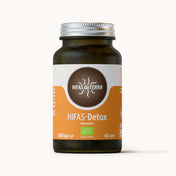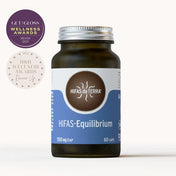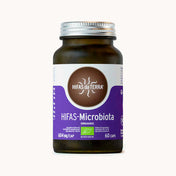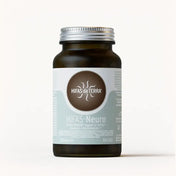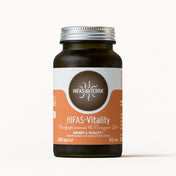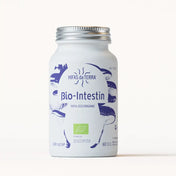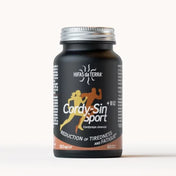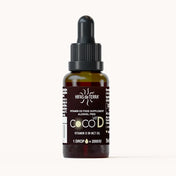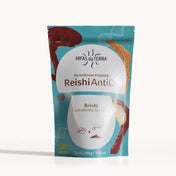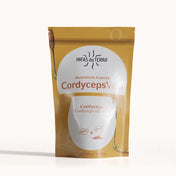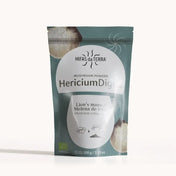
ESSENTIAL NOTES FROM THE “KING OF MUSHROOMS”
It is considered one of the best studied fungi, since, currently, there are More than 5,000 publications About its applications, its history or its active biomolecules. The benefits of the Reishi are due to the presence of these active biomolecules or specific nutrients. Among them, the main ones are polysaccharides such as beta-glucanos (Especially the β-D-Glucanos), the Terpenes (especially triterpenes), Pepidoglycans, etc. that we have been studying for more than 20 years in our R&D department. In some parts of the world, it was considered and still is considered that the Reishi has properties in the physical and mental balance of the body.
Possible Reishi applications
- Emotional Management: Relaxation and stress relief
- Integrative support: It has numerous studies studies on its activity in combination with conventional treatments and their effect on the quality of life (2,3,4,5)
- Also known as a powerful antiaging (1): Faced with the oxidation and production of free radicals that occur over time, stress, pollution and inappropriate diets.
In addition, in the last 10 years, the Portal of Scientific Articles Pubmed has published more than 1400 articles about Reishi, which reflects the growing interest of fungi applications in general, and Ganoderma in particular.
Products with Reishi
-
HIFAS-Equilibrium (Reishi, Lion’s Mane, Cordyceps) capsules
WITH REISHI, LION'S MANE AND CORDYCEPS
From 42,50 €Unit price /Unavailable -
Hifas-Menopause (Reishi, Cordyceps, Lion's Mane, Ashwaghanda KSM 66 and Green Tea extract) capsules
MOOD, HORMONAL BALANCE AND VITALITY
From 42,50 €Unit price /Unavailable -
-
Dr. Immune Five Syrup (Reishi, Agaricus, Oyster, Chaga, Shiitake)
HELP CHILDREN'S IMMUNE SYSTEMS
From 30,00 €Unit price /Unavailable

REISHI PROPERTIES< APPLICATIONS AND USES
The great interest in Reishi and its benefits are well documented, as is the case with other mushrooms such as Shiitake, Cordyceps and Lion's mane, among others. The first records date back to the 2nd millennium BC in the search for the “elixir of life” by Emperor Qin Shi Huang Di (known for building the Great Wall), to whom Reishi was given as a gift. After this episode, all specimens of this mushroom were reserved exclusively for the Chinese emperor. Today, Reishi remains the ‘most valuable natural substance in traditional Chinese medicine’. Its applications were already documented in the 16th-century Chinese medical work by the polymath Li Shih-Chen. This mushroom became the focus of modern science in the 1950s, with more detailed research carried out mainly in China and Japan. Traditionally, infusions were made from dehydrated Reishi. Today, infusions are still considered a traditional way of consuming Reishi, although they are not the only one. Reishi supplements For better use of its active biomolecules, concentrated Reishi extract is used. This can be found in a pure supplement (Mico-Rei) or combined with extracts from other species that have been studied, such as Mico-Mix, Mico-Five, HIFAS-Equilibrium, HIFAS-Menopause and HIFAS-Microbiota, Hifas-Intima Oral and Papilozumib; all of them designed as high-quality nutraceuticals in capsule form. It can also be found in children's formulas as a liquid extract (Dr. Immune Five and Dr. GB). Without a doubt, these types of superconcentrates, extracts, are the forms from which most studies on their applications have been carried out. In addition, Reishi powder is used as a supplement to prepare smoothies and hundreds of recipes (Reishi Antiox). As an innovative ingredient, Reishi is included in natural cosmetics, whether in soaps, creams or intimate lubricants such as Hifas-Intima Gel.
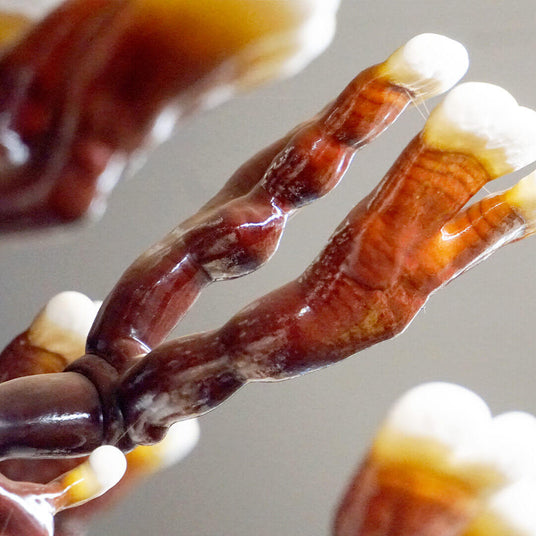
The culture of the Reishi
The reishi grows wildly in deciduous forests, especially of oaks and beechs, but is also found in coniferous forests. Not only the form and color of the Reishi itself can vary greatly, but there are also many other tree fungi of the same genre that can be easily confused with this famous fungus. Actually, it is naturally found in the Southeast Asia, Europe and North America. However, most often occurs through cultivation since the demand for this species is growing throughout the world. Reishi's production can also be carried out from trunks or serrin bags. In fact, trunks crop is one of the most traditional ways to obtain Reishi. However, the scientific interest that the Bioactive compounds of this fungus and the growing demand for products with Reishi has led to the development of new production systems and its optimisation.
Do you want to know more?
Habitat and distribution
Habitat and distribution
This species impresses in its extraordinary shape and colour that reminds marine corals, however, it belongs to the Fungi Kingdom or mushroom.
Naturally, it grows, forming rings that become thicker inside.
In optimal conditions, it forms extensions similar to a stem that, with its rounded ends, look like horns. These specimens were particularly appreciated in ancient China.
Today we know that this particular form has been linked to its terper content. The range of colours covered by the Reishi goes from intense red to white through yellow. The fruiting body has a woody consistency that gains hardness as time passes.
Mycological notes
Mycological notes
Ganoderma lucidum can be found at the base of dead tree trunks or growing through cracks in the bark, given its status as a saprophytic fungus, which feeds on organic debris from other species.
It is often confused with other similar species belonging to the same family, such as the fungus Ganoderma applantatum. Reishi is not a mushroom that can be cooked like Shiitake or Boletus. Due to its hardness and bitter taste, it is usually prepared as an infusion or consumed in shakes and smoothies, in powder form, or with other foods such as yoghurts, broths, soups, etc.
The culture in bioreactors
The culture in bioreactors
Premium quality, purity and sophistication in our production systems
One of the lines of research at Hifas da Terra is focused on the continuous improvement of the cultivation of different species in bioreactors (Reishi, Lion's Mane, Shiitake and Maitake) using certified organic substrates, as well as other processes to guarantee excellence in the final product developed with each mushroom. Hifas Quality System Through our own quality standard, we identify biomolecules and active ingredients, select the appropriate strains of fungi that contain them, and use our own analytical systems to ensure that the final product meets the highest standards of quality and safety. we identify biomolecules and active ingredients, carefully select the fungal strains that contain them, use our own specific analytical systems, and apply analysis protocols at different stages of production. Thanks to this rigorous system, we offer natural products, supplements and nutraceuticals with the Hifas Quality System guarantee, setting us apart from other products in terms of purity and premium quality.
R&D and Studies with Reishi
R&D and Studies with Reishi
- Hifas da Terra has carried out the study Hifas Sibo (2023) Prospective, randomized, unicentric in which the efficacy of its own ecological cultivation of Reishi and León's hair was evaluated in combination with a low diet in Fodmaps in people with Sibo (bacterial overgrowth of the small intestine).
- Hifas da Terra is currently working on the development of new ingredients based on Reishi within the framework of the project Nutrigen 4.0, whose objective is to achieve an automated and continuous production thanks to the cultivation in latest technology.
- Within the framework of the project Fungitechnco, The benefits of Reishi strains are demonstrated (Ganoderma lucidum) cultivated by Hifas da Terra.
Curiosities
Curiosities
- The scientific name of the Reishi, Ganoderma lucidum, it comes from the Greek and refers to its beautiful natural brightness. 'Won' It means bright, ‘Derma’ It means skin and ‘Lucidum’ that shines.
- In the East, Reishi's fruitful bodies became popular as Talismans.
